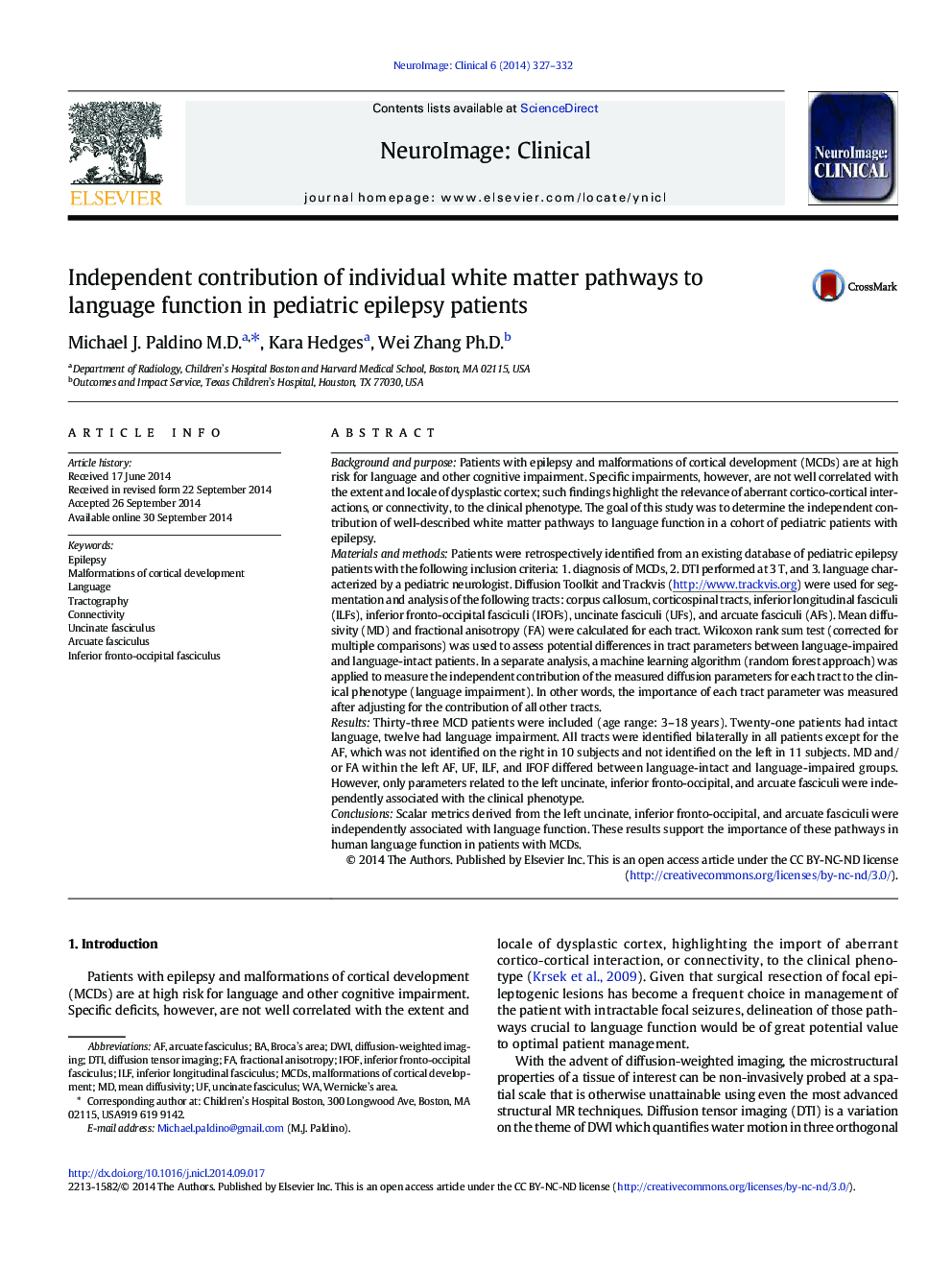| کد مقاله | کد نشریه | سال انتشار | مقاله انگلیسی | نسخه تمام متن |
|---|---|---|---|---|
| 3075256 | 1580961 | 2014 | 6 صفحه PDF | دانلود رایگان |
• Language phenotype was modeled based on metrics derived from whole-brain tractography.
• We used machine learning to account for the influence of all other variables.
• Metrics related to the left UF, IFOF, and AF were independently related to language.
• The machine learning algorithm accurately classified individual language function.
Background and purposePatients with epilepsy and malformations of cortical development (MCDs) are at high risk for language and other cognitive impairment. Specific impairments, however, are not well correlated with the extent and locale of dysplastic cortex; such findings highlight the relevance of aberrant cortico-cortical interactions, or connectivity, to the clinical phenotype. The goal of this study was to determine the independent contribution of well-described white matter pathways to language function in a cohort of pediatric patients with epilepsy.Materials and methodsPatients were retrospectively identified from an existing database of pediatric epilepsy patients with the following inclusion criteria: 1. diagnosis of MCDs, 2. DTI performed at 3 T, and 3. language characterized by a pediatric neurologist. Diffusion Toolkit and Trackvis (http://www.trackvis.org) were used for segmentation and analysis of the following tracts: corpus callosum, corticospinal tracts, inferior longitudinal fasciculi (ILFs), inferior fronto-occipital fasciculi (IFOFs), uncinate fasciculi (UFs), and arcuate fasciculi (AFs). Mean diffusivity (MD) and fractional anisotropy (FA) were calculated for each tract. Wilcoxon rank sum test (corrected for multiple comparisons) was used to assess potential differences in tract parameters between language-impaired and language-intact patients. In a separate analysis, a machine learning algorithm (random forest approach) was applied to measure the independent contribution of the measured diffusion parameters for each tract to the clinical phenotype (language impairment). In other words, the importance of each tract parameter was measured after adjusting for the contribution of all other tracts.ResultsThirty-three MCD patients were included (age range: 3–18 years). Twenty-one patients had intact language, twelve had language impairment. All tracts were identified bilaterally in all patients except for the AF, which was not identified on the right in 10 subjects and not identified on the left in 11 subjects. MD and/or FA within the left AF, UF, ILF, and IFOF differed between language-intact and language-impaired groups. However, only parameters related to the left uncinate, inferior fronto-occipital, and arcuate fasciculi were independently associated with the clinical phenotype.ConclusionsScalar metrics derived from the left uncinate, inferior fronto-occipital, and arcuate fasciculi were independently associated with language function. These results support the importance of these pathways in human language function in patients with MCDs.
Journal: NeuroImage: Clinical - Volume 6, 2014, Pages 327–332
